You’re running a popular site on the cusp of going global. You’ve already got a strong national presence, but you’ve simply outgrown this particular. Mulling over what to do in preparation for that final step is taxing. Luckily we’re here to help with that.
One of the main things you’ll need to do is present your site to as wide an audience as possible. And one of the easiest ways to do this is to present said page in their native language – they’ll feel more comfortable and surely come back for more. There are numerous ways to do this, but one of the best is with TranslatePress.
This plugin will give you everything you’ll ever need for turning your site multilingual and we’ll list all the main reasons you should give it a try right here and now.
Establish a global foothold
This one is pretty self-explanatory and we’ve already touched upon it a little bit in the intro. Now it’s really important to know that you don’t need to cover every language out there. Aside from five or six most commonly used ones there really isn’t a need to branch out further. Maybe see if a specific market is especially interesting for you and implement that language, but other than that you’re fine with the “basic setup”.
As we’ve already mentioned, providing visitors to browse your site in their native tongue makes them feel at home. Chances are they’ll spend more time there and if they spend more time chances are they’ll be willing to spend money too, be it from products, services, subscriptions to something else entirely.
Expand to new markets
When thinking of a “default internet language” English is the one that instantly comes to mind although it’s only third on the list of most spoken languages in the world. However, there is a large number of markets where that doesn’t hold true. Asia and South America, for example, are known to primarily use their native languages. Providing them with this opportunity shows a measure of respect for both their language and culture and is something that is highly appreciated. It’s tough to break out in new markets and making these kinds of moves will help immensely with gaining popularity with the local population.
Think even beyond the average visitor. Businesses, both big and small, will look to the web to find new business partners if they don’t have a local, or well established international solution. Making it easier for them to browse exactly what you offer and how to get in touch with will make any potential deals much more viable.
Be in front of the competition
If you’re doing something very few others are doing, you’re in a very good place to trump the competition. Being ahead of the curve doesn’t come easy, however. It requires good foresight, planning, and execution. One of the things that can help you achieve this is a multilingual site.
It’s always a good idea to compare to your competitors if only to see where you stand, but you should avoid letting them dictate the tempo. Strive to be a market leader that others will look to and follow. If you have the only multilingual site out of six or seven others in the same market sector, then you’re thinking outside of the box, boldly pushing forward while others all only following in your wake.
In the first part, we’ve elaborated more on why you should be using multilingual sites in general. Now, we’ll go a little bit further and get into why you should be using TranslatePress specifically.
It’s surprisingly simple to use
If you get only one thing out of this, then it has to be how easy TranslatePress is to use. The manual translations are done through a front-end interface in a very intuitive and user-friendly UI that you’ll grasp in mere minutes regardless of your previous skills.
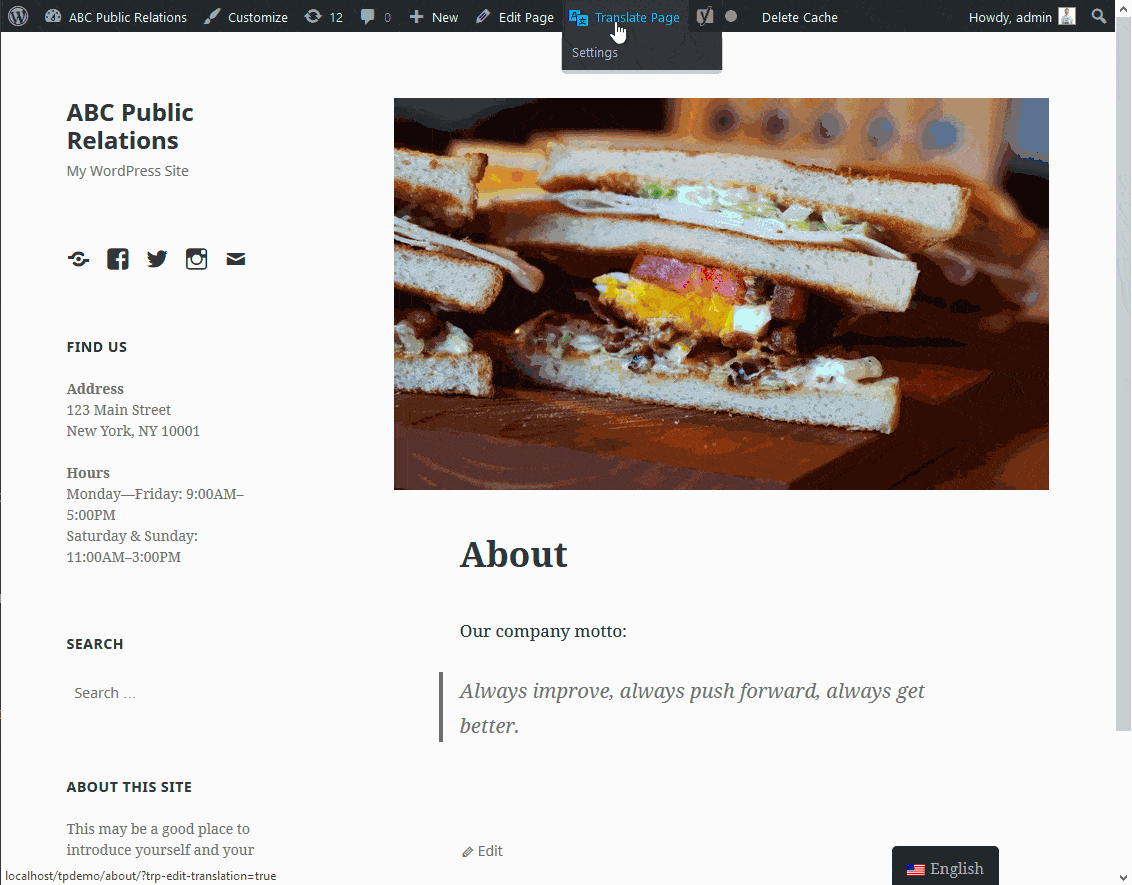
There are absolutely no conflicts with any themes or other plugins you might be using so you won’t need to tweak or remove anything. All the changes are done with a simple click of a button – as close to real-time as you can get.
Automatic translation can also be done through the same frontend UI. TranslatePress is integrated with Google Translate and to use it, you’ll only need a Google API key. This can be most effective if you combine it with the manual translation to get the quickest and most accurate results.
Numerous customization options
Any good software has to be open to customization. Small nuances mean a lot when you’re looking to present something unique. With this plugin, there will be no shortages of ways to bring all your ideas to life with really vast settings options.
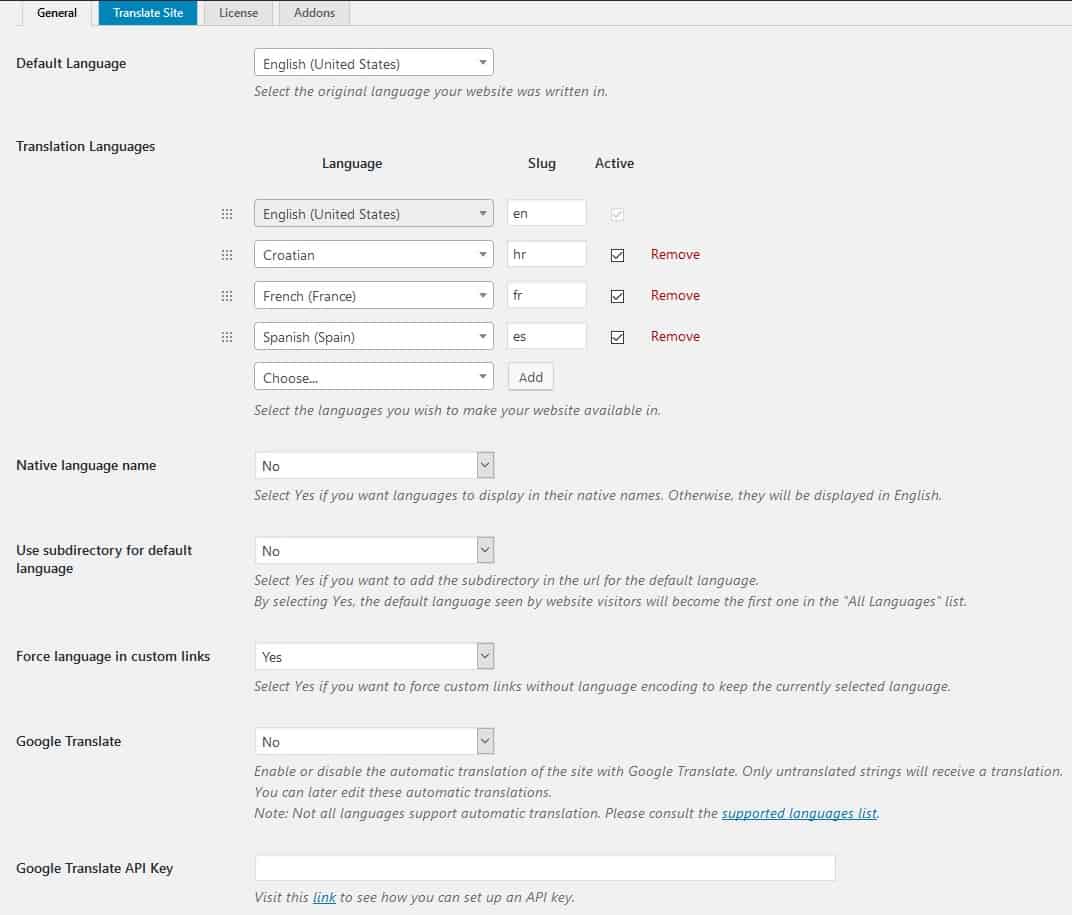
These will range from basic things like setting the default language and inserting a dropdown menu for all the languages you’ll include – going further to choose how the menu will look and if the languages will be displayed in English or the specific language itself.

Small things like these can lead to big results if they’re the right things. It’s a good idea to try the options out in the frontend editor to see how they work with the whole page, don’t be afraid to experiment, especially if you know what you’re doing. Advanced users will be able to use CSS class translation-block to translate specific HTML blocks that make up the page:
<p class="translation-block">Translate <em>everything</em> inside</p>
Getting to know the plugin and finding out how it ticks, you’ll get to use even more code that will add even more freedom to what you can do.
Note that this is a sort of “advanced upgrade”, even if you’re using solely the frontend editor and make minimal changes to the settings you’ll be able to get fantastic results.
The premium features
TranslatePress is a fairly robust tool in its free version, but you’ll get a full scope of how powerful it is only after you check out the premium tiers and all they add to the mix. There are six add-ons that expand the way you’ll be using it.
Extra languages
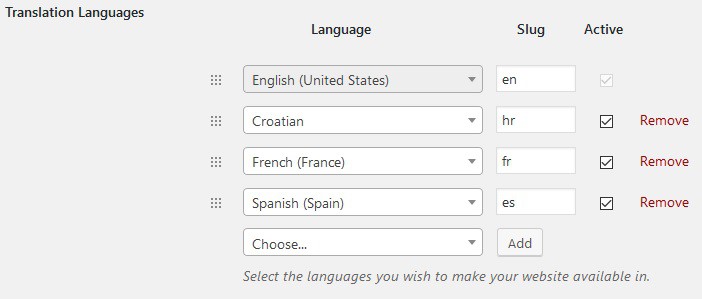
Add as many languages as you want to your site. If you’re looking to remove absolutely all language barriers this an add-on that will help. Also, it enables you to adjust when something is published based on translation completion – publish only after everything is translated or sooner, it’s up to you.
SEO pack
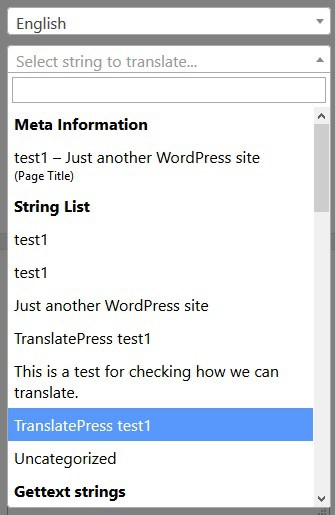
Maybe you’re looking to implement translation to specific elements on your page such as page title, URL slug, descriptions, etc. With the help of the SEO Pack, you’ll be able to do just that and boost your multilingual SEO.
Translator accounts
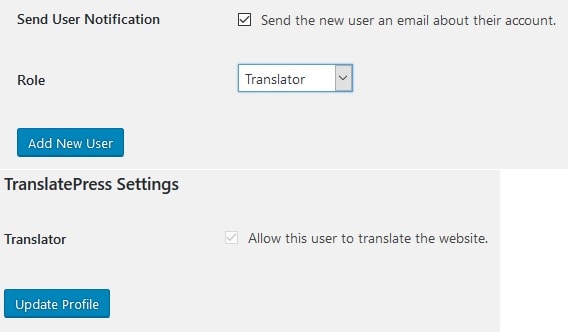
If your site’s big enough you won’t be able to do it all alone. Bringing in help and assigning rights to them is really easy with this add-on. You’ll be able to give people moderating rights for all basic functions without giving them full admin rights. The most notable function you’re allowing them to use is the frontend editor, which is essentially where most of the work is done.
Browse as other roles

Sometimes you just need to see thing from a different perspective. Viewing the changes you’re making as people who have other roles gives you a better understanding of how everything will look for everybody browsing your site. In case you’re ever unsure about how some choices will look from the outside, this is how you’ll know.
Navigation based on language
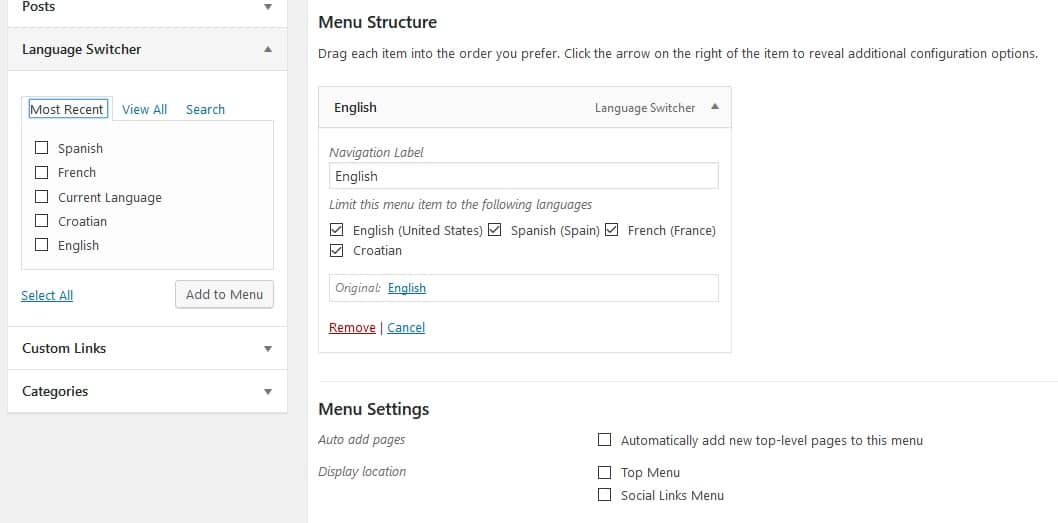
Get to choose which language the menu items are displayed. If you’re in a situation where you plan on doing several translations, but not all content is translated for all of them yet you’ll get to omit certain languages until they are complete. Not displaying something is better than displaying it only half done.
Automatic language detection

Just as the title says – you’ll get to insert language detection based on your visitors’ IP changing the language of your site to the native language of the visitor and then saving that setting for the IP in the future. Of course, the option to stick with the default browser language will still be available.
Speed
TranslatePress is fast. In this day and age, when we have less and less time in the day shaving some of that time can mean a lot. Having a fast site will improve your page ranking in search engines, thereby improving your number of visitors.
The more visitors you get the higher the chance to get your message across (doesn’t matter if it’s a product, service, ad campaign or something else entirely). If you’re using TranslatePress you won’t have to worry about any of these things, since it’s one of the fastest on the market. In case you want to go into more detail be sure to check out the full comparison.
Summary
We’re certain once you give it a try you’ll find even more reasons to work with TranslatePress that are more individual. The ones we’ve mentioned are just the most prominent ones that set it apart from the competition regarding the bigger picture. The best way to find your reason why it’s the best at what it does is to try it for yourself.